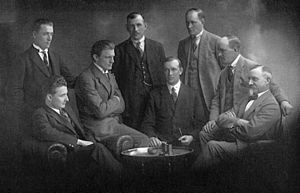
The Riksdag is the legislature and the supreme decision-making body of Sweden. Since 1971, the Riksdag has been a unicameral legislature with 349 members, elected proportionally and serving, since 1994, fixed four-year terms. The 2022 Swedish general election is the most recent general election.

Nils Edén was a Swedish historian and liberal politician who served as Prime Minister of Sweden from 1917 to 1920, and along with Hjalmar Branting acknowledged as co-architect of Sweden's transition from a constitutional monarchy to a fully parliamentary democracy with equal male and female suffrage.

The Socialist Party, was a political party in Sweden active from 1929 to 1948. Led by Karl Kilbom and Nils Flyg, the party was founded in 1929 as a splinter group of the Communist Party of Sweden. Until 1934, the splinter group used the same name Communist Party of Sweden, so in order to keep the two factions apart, this faction was generally known as Kilbommare ("Kilbomiars") while those who stayed in the old party were known as Sillénare.

Ture Nerman was a Swedish socialist. As a journalist and author, he was a well-known political activist in his time. He also wrote poems and songs.

Karl Kilbom was a Swedish politician and one of the founders of the Communist Party of Sweden.
General elections were held in Sweden on 21 September 1952. The Social Democrats remained the largest party with 110 of the 230 seats in the Andra kammaren of the Riksdag and together with the Communist Party of Sweden they got 115 seats and the other parties 115 seats. Tage Erlander and his Social Democratic Party did however form his second government with the Farmers' League already in 1951 and together with that party the Social Democrats now had a majority of 136 seats in the chamber and together with the Communists 141 seats. In the other indirectly elected chamber the Social Democrats had an absolute majority.
General elections were held in Sweden on 15 September 1968. Held in the wake of the crushing of the Prague spring, it resulted in a landslide victory for the Social Democratic government and Prime Minister Tage Erlander. It is one of two general elections in Swedish history where a single party received more than half of the vote. Erlander would resign the following year after an uninterrupted tenure of 23 years as head of government.

Sven Harald Linderot was a Swedish Communist leader. He was born Sven Harald Larsson but changed his surname to Linderot in 1918. Among party members he was also known as Sven-Lasse.
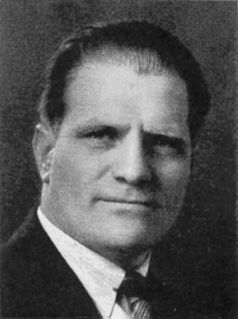
August Spångberg was a Swedish labor politician. He was a member of the Riksdag, elected initially as a Communist and later as a Social Democrat.
Albin Ström was a Swedish socialist politician from Gothenburg. As a young Social Democrat, Ström joined Zeth Höglund in 1917 when the party was split in two, as Höglund's radical left-wing was expelled. The left-wing soon formed the Swedish Communist Party, but in 1923 Ström left the CP and rejoined the Social Democratic Party.
Early general elections were held in Sweden between 10 and 26 September 1921. In the first elections held under universal suffrage, the Swedish Social Democratic Party remained the largest party, winning 93 of the 230 seats in the Second Chamber of the Riksdag. Party leader Hjalmar Branting formed his second government.
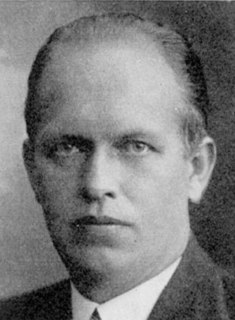
Edoff Emanuel Andersson was a Swedish politician and trade unionist. He was a prominent union leader of the civilian employees in the defense sector as well as a communist member of parliament.

Jonas Petter Dahlén was a Swedish mine worker and politician.

Lars Gunnar Öhman was a Swedish politician, belonging to the Communist Party of Sweden.

The Left Party is a socialist political party in Sweden. On economic issues, the party opposes privatizations and advocates increased public expenditure. In foreign policy, the party is Eurosceptic, being opposed to the European Union, NATO, and Swedish entry into the eurozone. It attempted to get Sweden to join the Non-Aligned Movement in 1980 but did not succeed. The party is eco-socialist, and also supports anti-racism, feminism, and republicanism. It is placed on the left-wing of the political spectrum.
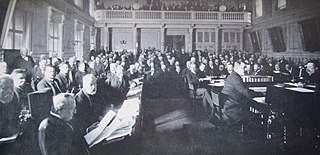
The Andra kammaren was the lower house of the bicameral Riksdag of Sweden between 1866 and 1970 that replaced the Riksdag of the Estates. The upper house was the Första kammaren.
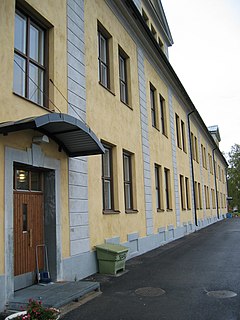
Boden Garrison is a major garrison in Sweden, located in and around Boden in Norrbotten County. The garrison has during the 20th century been, and still is, the largest garrison in Sweden, consisting of several units of the Swedish Armed Forces as well as Boden Fortress.

General Lars Herman Tingsten was a Swedish Army officer. He was Minister for War from 1905 to 1907 and Chief of the General Staff from 1919 to 1922.

Lieutenant General Knut Axel Ryding was a Swedish Army officer. His senior commands include the post of Chief of the General Staff and commanding officer of the 3rd Military District and the 3rd Division. Ryding also served as Minister for War for five years.

Alf Roar Dag Meyerhöffer was a Swedish Army officer and politician, who represented Högerpartiet in Swedish parliament Riksdag from 1932 to 1936.

